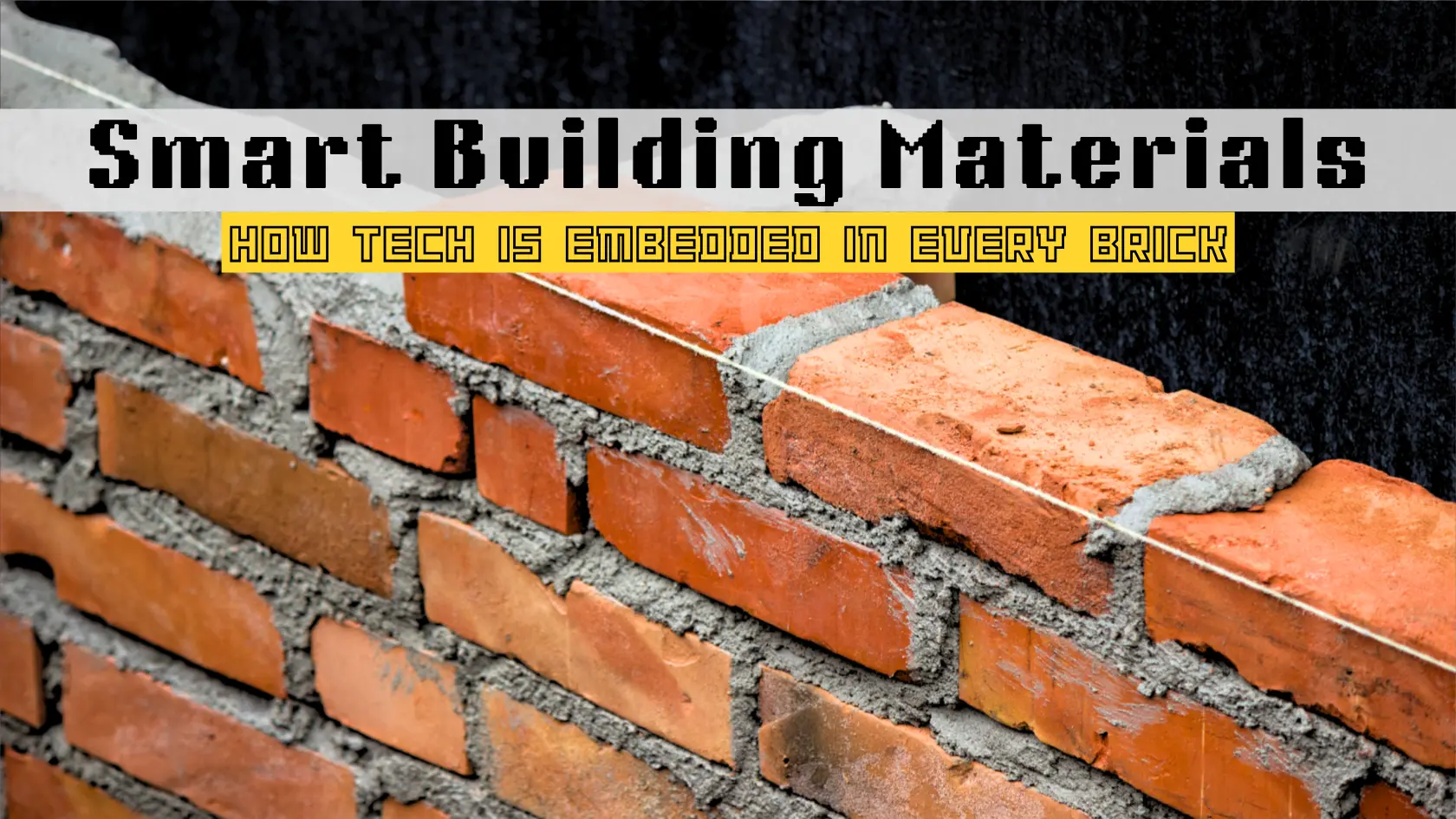The construction industry is entering a revolutionary era. For decades, bricks, concrete, steel, and wood were just raw materials—static components used to build structures. But today, building materials are no longer passive. They are becoming smart, adaptive, and responsive.
Welcome to the age of smart building materials, where technology is embedded into the very fabric of construction. From self-healing concrete to energy-generating glass, materials now have intelligence, memory, and adaptability. They enhance durability, safety, energy efficiency, and long-term performance—making modern buildings more resilient and sustainable than ever.
This blog explores the science, innovation, and future potential of smart building materials, and how they are reshaping construction as we know it.
1. What Are Smart Building Materials?
Smart building materials are advanced construction materials that can sense, react, or adapt to environmental changes. They use embedded technology, chemical reactions, or mechanical properties to enhance the performance of a structure over time.
These materials often integrate:
- Technology (sensors, chips, automation)
- Chemical intelligence (self-repairing reactions)
- Mechanical adaptability (shape memory, responsive textures)
- Energy functions (storage, generation, insulation)
They transform buildings into living ecosystems that monitor, protect, and sustain themselves.
2. Why Smart Building Materials Matter Today
Construction today demands more efficiency, sustainability, and longevity than ever before. Traditional materials alone cannot meet the challenges of climate change, rapid urbanization, and rising energy needs.
Smart materials bring answers:
✓ Increased Durability
Self-healing and self-adjusting materials extend the life of structures.
✓ Better Energy Efficiency
Buildings can generate, store, and manage energy internally.
✓ Enhanced Safety
Materials that detect stress, cracks, vibration, or fire risk improve building safety.
✓ Reduced Maintenance Costs
Smart responses reduce long-term repair expenses.
✓ Sustainability
Eco-friendly smart materials reduce waste, energy usage, and carbon footprint.
In short, smart materials make buildings stronger, safer, and greener.
3. Top Smart Building Materials Transforming Modern Construction
Here’s a deep dive into the materials redefining modern architecture:
1. Self-Healing Concrete
Concrete is the most widely used construction material—but also prone to cracks. Self-healing concrete solves this problem by using:
- Bacteria
- Microcapsules
- Polymers
When cracks appear, the embedded agents activate and seal them automatically.
Benefits:
- Longer lifespan
- Lower maintenance cost
- Higher structural integrity
Self-healing concrete is one of the most promising innovations for infrastructure, bridges, and large-scale construction.
2. Smart Glass (Electrochromic or Photochromic)
Smart glass changes its transparency based on light, temperature, or electric signals.
It can:
- Tint automatically to reduce heat
- Become opaque for privacy
- Allow light flow to reduce electricity usage
Why it’s trending:
Smart glass saves energy, boosts comfort, and supports green building certifications.
3. Aerogels: The “Frozen Smoke” Insulator
Aerogels are ultra-light materials with incredible insulating properties. Despite being almost weightless, they provide thermal protection better than any traditional insulator.
Key advantages:
- Up to 10x more efficient than fiberglass
- Fire-resistant
- Ultra-lightweight
Perfect for walls, roofs, pipelines, and cold storage applications.
4. Phase-Change Materials (PCMs)
PCMs absorb or release heat when the temperature changes—helping buildings stay naturally cool or warm.
They act like thermal batteries.
Benefits:
- Reduce AC and heating costs
- Improve indoor comfort
- Lower carbon footprint
PCMs are commonly used in drywall, ceilings, and façades.
5. Transparent Aluminum
Straight out of science fiction, transparent aluminum (aluminum oxynitride) is as clear as glass but harder than steel.
Applications include:
- High-security windows
- Military-grade barriers
- Ultra-strong facades
It promises futuristic buildings with unmatched strength and transparency.
6. Memory Alloys and Shape-Memory Materials
These materials “remember” their original shape. When heated or stimulated, they return to their pre-set form.
Uses:
- Reinforced structural joints
- Anti-seismic building components
- Adaptive shading systems
Smart materials like these help structures withstand earthquakes and mechanical stress.
7. Energy-Generating Tiles
Smart tiles convert:
- Footsteps
- Pressure
- Vibrations
into electricity.
Imagine a walkway, supermarket, or airport that powers lights through daily foot traffic. This is now a reality, thanks to piezoelectric materials.
8. Smart Bricks (Interlocking, Sensor-Embedded)
These next-gen bricks allow:
- Quick, mortar-free construction
- Built-in wiring paths
- Embedded sensors to detect stress and temperature
- Greater structural stability
They enable faster, safer, and more efficient building processes.
9. Solar Paint and Solar Windows
Solar technology is no longer limited to rooftop panels.
Solar paint: generates electricity when exposed to sunlight.
Solar windows: function as transparent solar panels.
This allows buildings to generate energy across their entire surface.
4. How Smart Building Materials Improve Construction Efficiency
Smart materials don’t just enhance buildings—they streamline the entire construction process.
● Faster Construction Time
Interlocking bricks, modular smart materials, and automated systems reduce labor and time.
● Reduced Waste
Precise, tech-enabled materials minimize cutting, shaping, and disposal waste.
● Improved Design Flexibility
Smart materials allow creative architectural freedom with fewer limitations.
● Better Lifecycle Performance
Buildings stay stronger and more energy-efficient over decades.
5. Challenges to Widespread Adoption
Despite their benefits, smart building materials face some challenges:
- Higher initial cost
- Need for highly skilled installation
- Limited local availability
- Compatibility with traditional materials
- Technological learning curve
However, as demand increases and prices drop, smart materials will become mainstream across residential, commercial, and industrial construction.
6. The Future: Buildings That Think, Heal, and Interact
The next generation of buildings will act like living organisms—capable of learning, regenerating, and communicating.
Future trends include:
- Buildings with AI-driven structural response
- Materials that self-adjust to stress
- Façades that harvest energy
- Self-cleaning and pollution-absorbing surfaces
- Buildings that monitor their health in real-time
Smart building materials will play a central role in the future of sustainable and intelligent infrastructure.
Conclusion
Smart building materials are transforming every aspect of construction. By embedding technology into bricks, glass, and concrete, we move toward buildings that are more resilient, efficient, and sustainable.
These innovations not only improve performance—they redefine what buildings can be.
As the world shifts toward smarter cities and greener construction, smart building materials are set to become the foundation of future infrastructure.

